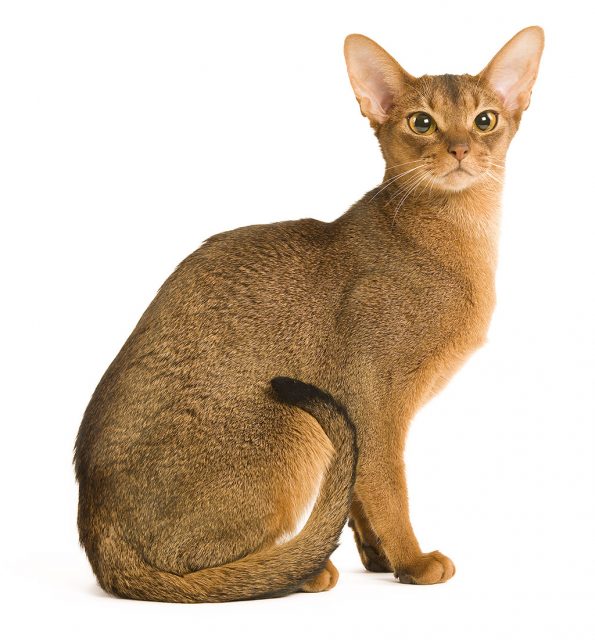Type the name of the breed you're looking for below
[wpdreams_ajaxsearchlite] Don't see the breed your're looking for? Click here and let us know!
Breed Characteristics
1 paw - breed exhibits the least amount of this characteristic
5 paws - breed exhibits most amount of this characteristic
Abyssinian
| Origin And History | The Abyssinian cat as it is known today was developed in Great Britain. The name 'Abyssinian' refers to Ethiopia, in reference to widely-spread stories of British soldiers deployed to North Africa in the nineteenth century returning home with kittens purchased from local traders. However, more recent genetic research suggests the breed actually originated in Egypt and other areas near the coast of the Indian Ocean, where colonists may have purchased animals from wild animal traders. The modern breed is believed by some to have originated from one female kitten named Zula, who was taken from Alexandria by a British soldier and brought to England in 1868. However, there is no solid link between Zula and the cat first listed as an Abyssinian in 1882. |
| Personality | Abyssinians are a popular breed thanks in large part to their unusual intelligence and generally extroverted, playful, willful personalities. They are said to become depressed without constant activity and attention from their owners. In marked contrast to this outgoing nature (and to most other Oriental shorthair breeds) they tend to be very quiet cats, with soft voices. Abyssinians can be difficult to show, as some individuals are excessively timid or particularly shy of strangers. |
Physical Attributes
| Appearance | The Abyssinian is a slender, fine-boned, medium-sized cat. The head is moderately wedge shaped, with a slight break at the muzzle, and nose and chin ideally forming a straight vertical line when viewed in profile. They have alert, relatively large pointed ears. The notably expressive eyes are almond shaped and are gold, green, hazel or copper depending on coat color. The legs should be long in proportion to a graceful body, with small oval paws; the tail is likewise long and tapering. Abyssinian kittens are born with dark coats that gradually lighten as they mature, usually over several months. The adult coat should not be excessively short and is ideally fine, dense and close-lying, silky to the touch. The ticked or agouti effect that is the trademark of the breed—genetically a variant of the tabby pattern—should be uniform over the body, although the ridge of the spine and tail, back of the hind legs and the pads of the paws are always noticeably darker. Each hair has a light base with three or four bands of additional color growing darker towards the tip. The base colour should be as clear as possible; any extensive intermingling with grey is considered a serious fault. A tendency to white on the chin is common but likewise must be minimal. The typical tabby M-shaped marking is often found on the forehead |
| Health | The breed can be prone to gingivitis, which can lead to more serious periodontitis. Familial renal amyloidosis or AA amyloidosis, a kidney disorder due to a mutation in the AA amyloid protein gene, has been seen in Abyssinians. The Abyssinian has had severe problems with blindness caused by a hereditary retinal degeneration due to mutations in the rdAc gene. However, the prevalence has been reduced from 45% to less than 4% in 2008 in the country of Sweden. With the widespread availability of rdAc mutation detection tests and services, such as those provided by the UC Davis Veterinary Genetics Laboratory, it is possible to reduce the disease frequency in all populations of Abyssinian. |



